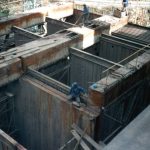Prof. Istvan Kiss

Business Position: Associate Professor
Company: Budapest University of Technology and
Economics
Year of Birth: 1972
Years in Industry: 28 (cooperation with industrial partners)
Nationality: Hungarian
Phone: +36 1 463 2904
Email: kiss.istvan@vik.bme.hu
Istvan Kiss was graduated in 1995 as an electrical engineer in 1995 at the Technical University of Budapest. His MSc thesis was connected to the numerical calculation of the distribution of electric field in the presence of space charge. Although it was used for several purposes in insulation engineering, it was clear that modelling of space charge is vital in case of electrostatic precipitators. In cooperation with the Department of Fluid Mechanics, a new ESP model was created which was the basis of his PhD thesis.
As a young researcher with PhD degree, he was involved in the works of the Department High Voltage Engineering and Equipment led by Prof. Istvan Berta. Dr. Kiss was involved in several industrial projects and connecting research works, mainly upgrading ESP-s because of the change of the technology producing the gas to be cleaned. In these works, application of the ESP model was very useful.
He also took part with his software development and numerical modelling skills in electrothermal and magnetohydrodynamic analysis of aluminium smelters in the USA.
As a member of the Working Party “Static Electricity in the Process Industries” he was deeply involved into the analysis of risks arising from electrostatic charging and discharges. Ha was one of the pioneers using soft computing methods in this field. Results obtained here inspired him to analyse similar risks in electrostatic precipitators. Normally no explosive atmosphere is allowed in EPS-s because breakdowns are permanently present, but in some very rear cases fire or explosion can happen. To reduce such risk below the tolerable was also an important field of his interest.
Numerical and laboratory analysis of electrical discharges is also a connection between two important fields of his interest: electrostatic precipitation and lightning protection. He is the member of the Scientific Committee of Int. Conf. on Lightning Protection (ICLP).



